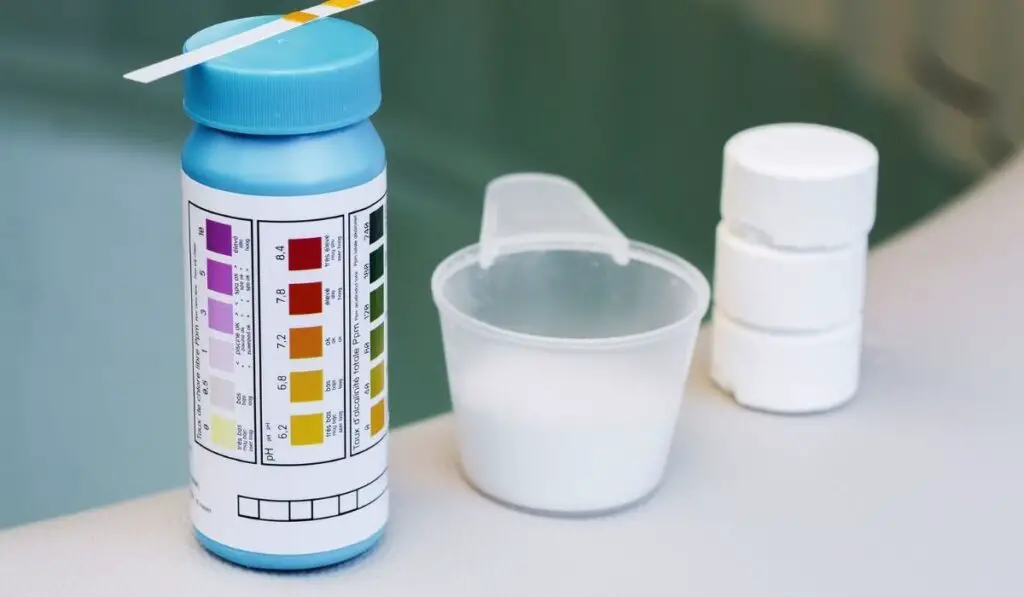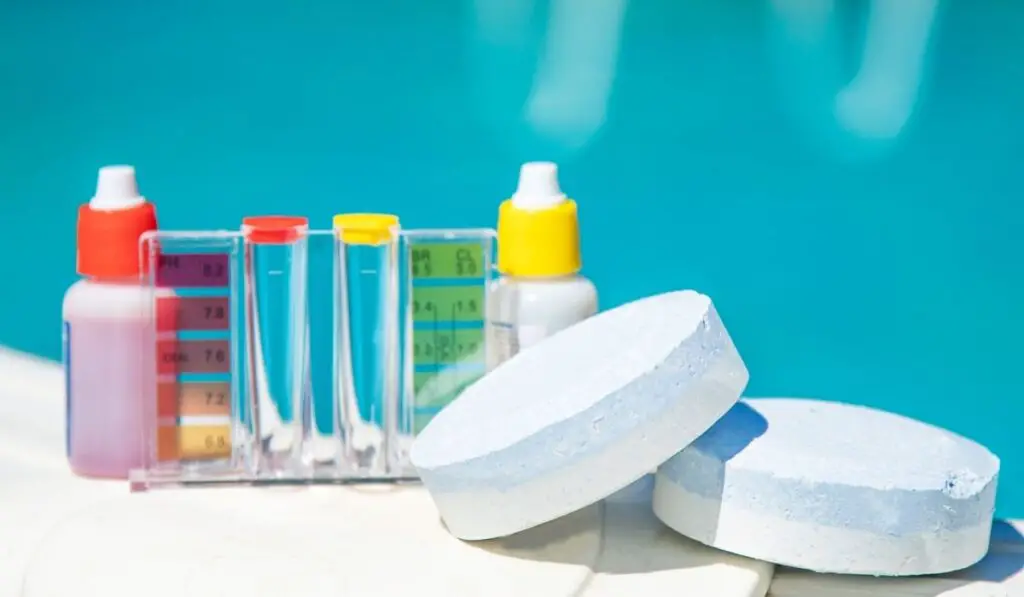If you own a pool, you probably know that it’s important to maintain a balance of chemicals in the water to destroy any bacteria that might develop. That generally means keeping the chlorine level at between 1 and 3 ppm. However, every now and again, you might need to “shock” your pool to really vanquish that bacteria! So what exactly is pool shock, and is there a difference between that and basic chlorine?
Chlorine sanitizers are added to your pool in low amounts to ensure it’s kept clean. Pool shock is simply chlorine in a very high dose, which means the bacteria is killed off much more effectively and quickly. Make sure you wait some time after shocking your pool before swimming in it again.
Let’s take a closer look at the differences between “pool shock” and chlorine so you know when it’s appropriate to use each one. It’s a good idea to have both around, as you will need to use each one at some point.
What Is Pool Shock?

Pool shock is a very high dose of chlorine that’s used to kill off pollutants and bacteria in the water. It has a high percentage of free chlorine, meaning it’s much more effective at taking care of problems than the usual level of chlorine in your water.
Pool shock is made of 12.5% Sodium Hypochlorite, which will push the chlorine levels in your pool to between 5 and 10 ppm.
While it’s important to maintain a good chemical balance in the pool, there will come a time when the normal chemical levels aren’t enough to get rid of everything that’s built up in the water — hence the need to shock the pool with a high percentage of free chlorine.
There is also a non-chlorinated version available. This is a chemical known as potassium monopersulfate, which works by oxidizing the compounds in the water. It essentially clears the way for the chlorine that’s already in there to do its job and take care of the bacteria.
What Is Chlorine?
Chlorine is a sanitizer that creates two chemicals in the water called hypochlorite ion and hypocholorous acid. They attack the bacteria in the water and destroy it, which keeps the water safe to swim in.
Swimming in water that’s full of pollutants can cause infections and, if the water is accidentally consumed or comes into contact with an open wound, it can make you very sick. That’s why it’s necessary to maintain the chlorine balance of your pool.
There are a few different types of chlorine. Free chlorine is chlorine in its purest form, which is what you would usually use to keep your pool water clean.
Combined chlorine is the name of chlorine that has already done as much as it can for your pool and is no longer effective at clearing out bacteria.
The last type is total chlorine, which is all of the free and combined chlorine together.
Differences Between Pool Shock and Chlorine
For the most part, pool shock and chlorine are the same — or, to be more specific, pool shock and free chlorine are the same. Pool shock is simply a high dose of free chlorine to ensure all of the pollutants in your pool are killed off.
Both chlorine and pool shock kill bacteria and algae. One of them will just do so at a much faster and higher rate.
Chlorine can refer to any of the types mentioned above, so some chlorine may not actually be effective at killing off the bacteria in the water. If someone is talking about chlorine, you can’t be sure which type they mean unless they specify, whereas pool shock is definitely referring to free chlorine.
If you’re looking to shock your pool, it’s possible to do so with chlorine granules, but it’s best to buy a specific pool shock (on Amazon) to ensure you’re getting a high concentration.
It’s also important to note that chlorinated pool shock isn’t stabilized. Most other chlorine added to the water has a stabilizer so that it’s released in safe batches, and so that the water stays at safe levels to swim in. Pool shock doesn’t do this.
Make sure you check how much pool shock you’re adding and test that the water has returned to safe chlorine levels before you decide to go for a post-shock swim.
Do You Need Pool Shock and Chlorine?

So, now that you know that pool shock and chlorine have similar properties, you might be wondering if you need both for your pool.
It’s best to keep both around. The reason for this is that chlorine is used to maintain the water level, but eventually, there will come a time when you need to shock your pool. Some instances when you’ll need pool shock include:
- After heavy use, like a pool party where lots of irritants may have gotten into the pool
- After a hot, sunny day, where the sun’s rays may have killed off chlorine
- After a storm that brought lots of rainwater into the pool
- After the pool has been closed for the winter
Generally, just use your best judgment. If more pollutants than usual may have gotten into the pool, you need pool shock and not just actual chlorine.
Another time you might need to shock the pool is if it feels like there’s too much chlorine. This might seem wildly contradictory, but if there’s noticeable chlorine irritation, it might mean there’s too much combined chlorine and not enough free chlorine.
That’s why shocking can help; it can reset the chlorine levels and clean out pollutants and bacteria.
How to Use Pool Shock
If you’ve never used pool shock before and there has come a time when you need to, here’s how to effectively shock a pool.
The first thing you should do is start running the pump to get the water circulating. Don’t pour pool shock into stagnant water! Then, go around the perimeter and pour the shock in.
It’s a good idea to do this at night and leave the pump running.
Retest the water after twelve hours. If it’s not at a safe level to swim in, keep retesting every few hours. It’s essential to wait until the level gets back to normal before you go ahead and jump back in, as chlorine toxicity is a very real concern.
